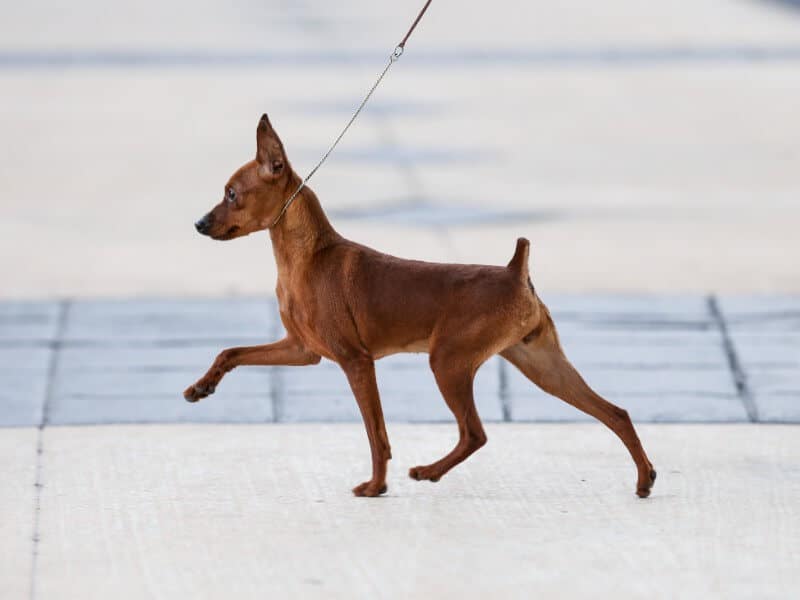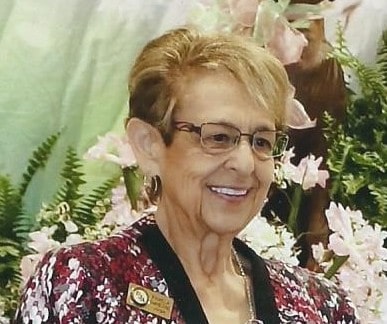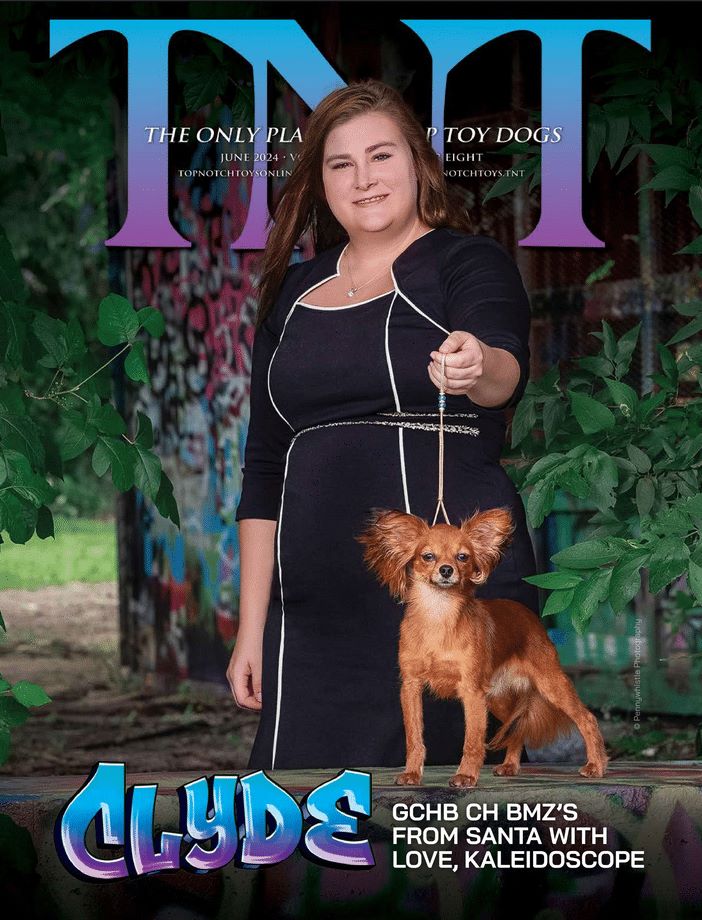It is an honor to be asked to write about Miniature Pinschers, as they are one of my favorite breeds. My love of this breed began in the late 1960s and continues to this day. Their spirit and presence captured me. Hopefully, some of you judges who are newer to this breed will understand the Min Pin better after reading this article. I’m hoping that some of you breeders out there will also benefit from my “words of wisdom.” However, my opinions are just that—
my opinions.
Judging the Miniature Pinscher can be challenging as they are not shown stacked motionless like most other breeds. They are very animated, with complete self-possession and a spirited presence. If you have one in the ring without these characteristic traits, please do not reward it.
I bought my first Miniature Pinscher in 1968. What an experience that was! She was fearless in my arms and fearless on the ground, but a real wimp on the table. Not being an experienced handler, I would get so embarrassed every time my wonderful Min Pin would shrink from examination. I was told by those with more longevity in the breed to simply exclaim, “Oh my, I don’t know why she is doing that, she has never done that before!” Well, that worked fine until the day she won the Breed and then wimped on the table to the Group judge (same judge). Before I knew what I was saying, I declared, “Oh my, I don’t know why she is doing that, she has never done that before!” Well, needless to say, I learned my lesson to keep my mouth shut.
So, in a further effort to learn about this breed, I actually talked to people who really knew them. Mr. John McNamara of Jay-Mac fame was one. I spent quite a bit of time listening to him at the shows, and he graciously let me come to his home for more Min Pin education. Most are now better trained for the table than the dogs of old. New techniques and a concentrated effort can produce stability on the table. However, they are big little dogs and should be examined on a table—and judged on the ground.
However, they are big little dogs and should be examined on a table—and judged on the ground.
Some advice for you breeders is to get a grooming table and put your puppies on it (one at a time, of course) on a leash, and play with them using some bait and toys. You could even take it a step further and feed them on the table. If they are comfortable on the table at home, you have a much better chance of them being happy on the table in the ring. Take the time to do this even if you have to put the table in front of your couch or chair and do it while you are watching TV. I know I don’t have to mention this, but I will anyway: Never leave a Min Pin alone on the table. Other breeds you can leave alone on a table, but NOT a Min Pin!
Mr. McNamara used to pay the kids a dollar a dog to take his extra dogs in the ring. My daughter, Angela, was so thrilled when she became one of them. At one of her first shows as a “handler” for Mr. McNamara, she came out of the ring with a reserve ribbon—so proud of her accomplishment! She actually got the dog to stand still. However, when I casually mentioned that she got the Reserve because there were only two in the ring (of course, the one Mr. McNamara took in got WD) her reply was, “The judge didn’t have to give it to me.” Nothing was going to disturb her happiness with that Reserve and, of course, her dollar. Back in the early ‘70s, you could actually purchase something with a dollar. She was correct, the judge did not have to give her the Reserve.
Since that time, I have bred some champion Miniature Pinschers. However, most of my accomplishments with them came as a handler. I finished many and won some Groups. My grandson, Seth, traveled with me quite a bit. When he was about 8 or 9 years old, we were showing a Min Pin bitch that did not take to strangers too easily. I was awarded WB with her. I had a special, however, so I made a snap decision to let my grandson take her back in for the Breed. Even though he was not an experienced handler, the bitch knew and loved him. So, I thought she would look better for him than with a stranger. I was right. He won Best of Breed! One of the things to realize when judging this breed is that they are totally devoted to their people. They are great show dogs whenever they are comfortable with the person on the other end of their leash.
Many years ago, we were training several puppy Min Pins for a client and decided to take them to a fun match. I got a youngster to practice with them and take them in the ring. They, of course, walked quite nicely outside the ring, but in the ring… walk a step, spin, walk another step, spin twice, walk another step, jump, another step, jump twice. Get the picture? The judge said, “Why don’t you train your dogs?” My little handler’s response was, “They are Min Pins.” That explains it! So, in judging them, there are times when you will need patience and the ability to look beyond the spinning and jumping. They can be walking along perfectly and, quick as a blink, they can do a total spin around and then walk perfectly again.
Judging The Miniature Pinscher: Table Examination
When examining the breed on the table, just walk right up to them. You can have the handler show the bite or you can gently do it yourself. As a judge, I do prefer to do it myself because, sometimes, the handlers are inexperienced and they let go of the dog to show the bite. This causes the dog to move, and time is lost waiting for the handler to get the dog back under control so that you can finish the examination. It is more beneficial to use the time watching the dog move than waiting for the handler to restack it.
Min Pins should be shown on a loose lead. They should not be stacked on the ground, but should stand and either focus on something off in the distance (only they know what fascinates them so much), be baited, or they can stand and look at each other. They can flit from one position to another from one second to the next. Please don’t penalize this type of behavior, for to do so would be overlooking the very essence of this breed. The trick is to catch them being still enough to look at them. Of course, I understand you can’t put up a dog that doesn’t stand still long enough for you to see it, but don’t expect them to be still the entire time they are in the ring.
As an interesting aside, since I have lived with many Min Pins, they are great pets. My first went to dog shows with me all her life, and she lived to the wonderful old age of 17-1/2. Min Pins love their owners and friends. The flighty attitude that you see at the dog shows is not there at home. They are totally devoted and focused on you at home, but at the shows they see imaginary objects that demand their attention, causing them to flit from one position to the other rather quickly.
One of the most important attributes to look for in judging the Miniature Pinscher is its hackney-like action. Without its hackney-like gait, it is NOT a Min Pin. From the standard: “The hackney-like action is a high-stepping, reaching, free and easy gait in which the front leg moves straight forward and in front of the body and the foot bends at the wrist.” This gait, combined with “correct temperament of fearless animation, complete self-possession and spirited presence,” is very important. These characteristics set this breed apart from all others.
I would like to go a bit further to explain that the true hackney-like action is one of reach and break. This is very hard to get, but should definitely be rewarded when found. Many will break in front of their nose, but will not reach out at all. And then you have those with plenty of reach, but absolutely no break whatsoever. If faced with two exhibits that are equal in all other aspects, I would choose the one that does have break, thus making it a Min Pin. No hackney? It’s not a Min Pin!! Simple as that. Also, this is a powerful, confident breed that struts its stuff—the tail should be up.
After examination and after your exhibits have been moved, you may have a few dogs that, in your opinion, look equal. Move these around the ring (not down and back) and look for the true hackney as a decision maker. Remember, head and tail carried high, high-stepping, reaching, free and easy, with a bend at the wrist.
The Miniature Pinscher is a compact dog with a level or slightly sloping topline and a tail set high, and held erect. The whole package is one of confidence, authority, and presence. The breed has an unmistakable take-charge attitude. He’s a remarkable little guy, full of energy and drive.
Judging The Miniature Pinscher “King of Toys.”










